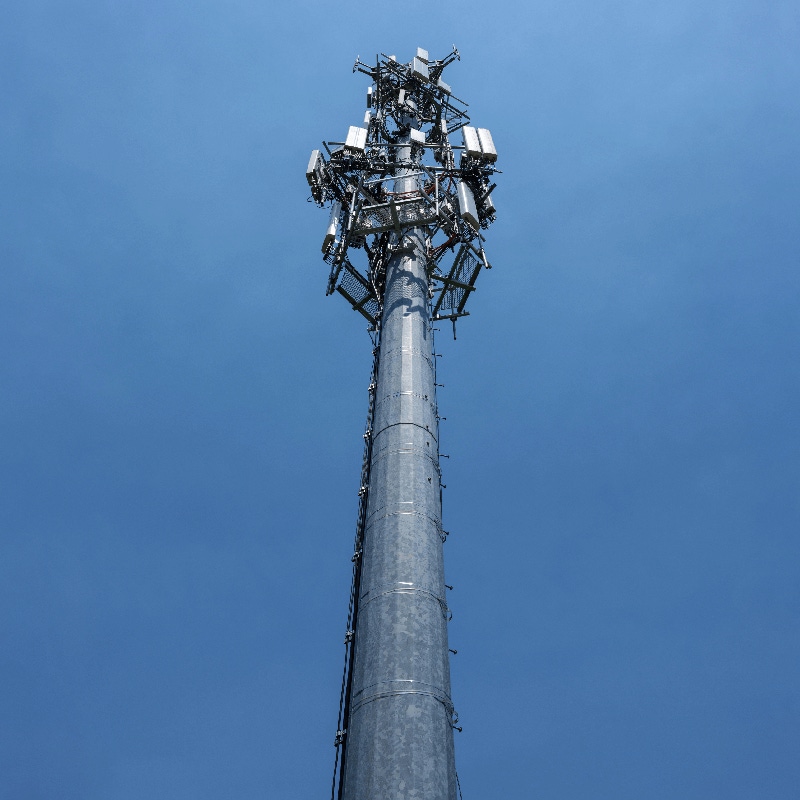Hurricane Fiona knocked out wireline Internet services to hundreds of thousands of subscribers in Puerto Rico and the US Virgin Islands. And the storm shut down roughly 23.5% of the cell sites in those areas, too.

According to the latest statistics from the FCC, Hurricane Fiona knocked out wireline Internet services to roughly 767,858 subscribers in Puerto Rico and the US Virgin Islands. And the storm shut down about 23.5% of the cell sites in those areas, too.
However, the agency noted that the availability of cellular services on the islands isn't directly related to the number of sites still online. After all, wireless networks are often designed with numerous, overlapping cell sites and wireless providers often deploy temporary infrastructure, such as cells-on-wheels (COWs), when necessary.
Although Verizon and AT&T haven't made public announcements about Hurricane Fiona specifically, T-Mobile said "our recovery teams are in the field and will be refueling and assessing damages as long as the conditions allow them to do so." The company added that its network in the US Virgin Islands is operational and its retail stores there remain open.
Figure 1:  (Source: Phil Harvey/Alamy Stock Photo)
(Source: Phil Harvey/Alamy Stock Photo)
According to the New York Times, Hurricane Fiona intensified to a Category 3 storm on Tuesday after wrecking Puerto Rico's power grid on Sunday. The publication reported that nearly 1.2 million people were still without power there.
The situation comes roughly five years after Hurricane Maria decimated Puerto Rico's infrastructure. At that time, Alphabet's Project Loon quickly launched its balloon-based Internet service across the area, a situation the company used to highlight the potential for Loon in disaster situations.
However, Loon last year discontinued its operations. "We haven't found a way to get the costs low enough to build a long-term, sustainable business," explained chief executive Alastair Westgarth at the time.
The bigger picture
To be clear, Hurricane Maria and Hurricane Fiona are just two of many storms. As noted by the NYT, the Atlantic hurricane season, which lasts from June 1 to Nov. 30, has had a relatively quiet start with only three named storms before September 1.
Hurricanes are just one type of natural disaster that telecom network operators must address. Other natural disasters range from earthquakes to mudslides to droughts. And other types of disasters that could affect telecom network operators include everything from cyberattacks to pandemics. That's why many network operators invest in state-of-the-art network operations centers (NOCs), and why they often build more than one.
Service providers frequently employ a variety of techniques to ensure their networks continue to operate through whatever disasters occur. For example, Verizon maintains up to 8 hours of backup battery power at all its macro cell sites, and "where possible" designs those sites to support backup power through diesel generators that last between 24-72 hours on a single tank of fuel. In another example, AT&T worked with the US Department of Energy's Argonne National Laboratory to develop a Climate Change Analysis Tool (CCAT) that projects flooding and winds in the Southeastern US over the next 30 years.
The FCC is moving forward with plans to make voluntary rules around network resiliency into enforceable ones. The agency is working to require network operators to provide mutual aid to one another – including providing bilateral roaming agreements – to cover situations like hurricanes.
"Taken together, these changes will help restore service faster, help speed response coordination, and keep more people connected in disaster," FCC Chairwoman Jessica Rosenworcel said this summer, of the new rules.
Rosenworcel continued: "We need to because network resiliency is so essential. Last Fall it was a hurricane in the Gulf, but we have also seen flooding in the Southwest, and wildfires out West. One thing we know for sure is that Mother Nature's wrath will visit us again and again. So we will have to continue to update our policies regarding network resiliency so that communications are available when we need them most."
Related posts:
— Mike Dano, Editorial Director, 5G & Mobile Strategies, Light Reading | @mikeddano
About the Author(s)
You May Also Like











